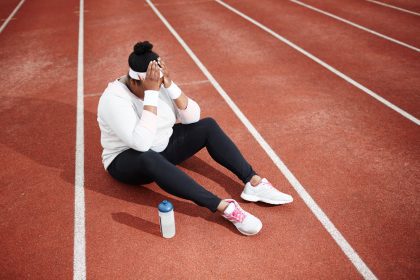The fitness world has turned workout timing into a religious debate with passionate followers on both sides. Morning warriors swear by their pre-dawn sweat sessions, claiming superior fat burning and all-day energy boosts. Evening athletes argue that afternoon and evening workouts deliver better performance and more satisfying results. Meanwhile, your body has been quietly operating on its own internal schedule that might not match either camp’s preferences.
Your circadian rhythm doesn’t just control when you feel sleepy or alert. It orchestrates a complex symphony of hormonal fluctuations, body temperature changes, and metabolic shifts that directly influence how your body responds to exercise at different times of day. Understanding these biological patterns can help you optimize your workout timing for your specific goals and lifestyle.
The truth about optimal workout timing is more nuanced than the morning versus evening debate suggests. Your body experiences predictable changes throughout the day that affect everything from strength and endurance to flexibility and recovery. Working with these natural rhythms rather than against them can significantly improve your exercise results and overall fitness experience.
Your body temperature tells the performance story
Core body temperature follows a predictable daily pattern that directly correlates with exercise performance and injury risk. Your temperature is lowest in the early morning hours and gradually rises throughout the day, reaching its peak in late afternoon or early evening before beginning to decline again.
This temperature fluctuation affects muscle function, joint mobility, and overall physical performance in ways that most people don’t realize. When your core temperature is lower, your muscles are literally stiffer and less efficient, requiring more extensive warm-up time to reach optimal function.
Morning workouts often feel harder because your body temperature is still relatively low, making your muscles and joints less prepared for intense activity. This doesn’t mean morning exercise is ineffective, but it does explain why those early workouts might feel more challenging than similar sessions later in the day.
Evening workouts benefit from naturally elevated body temperature, which means your muscles are already somewhat warmed up and ready for action. This natural warming can contribute to better flexibility, reduced injury risk, and improved performance in activities requiring power and coordination.
The temperature effect is particularly noticeable in activities requiring explosive movements, complex coordination, or maximum strength output. Sports that demand peak performance often see better results when scheduled during natural temperature peaks rather than early morning valleys.
However, individual variation in circadian rhythms means that some people naturally experience their temperature peaks earlier or later than average. Understanding your personal pattern can help you identify your optimal workout timing regardless of general population trends.
Hormonal fluctuations change everything
Your hormone levels fluctuate dramatically throughout the day in patterns that significantly influence exercise response, energy levels, and recovery capacity. These hormonal rhythms affect everything from motivation and strength to fat burning and muscle building potential.
Cortisol, often called the stress hormone, follows a specific daily pattern that peaks in early morning and gradually declines throughout the day. This morning cortisol surge provides natural energy and alertness that can fuel intense morning workouts, but it also creates conditions that favor muscle breakdown over muscle building.
Growth hormone, which is crucial for muscle repair and development, increases during evening hours and peaks during sleep. This timing suggests that evening workouts might provide better muscle-building stimulus since growth hormone levels are rising to support recovery and adaptation processes.
Testosterone levels in both men and women typically peak in the morning hours, which could theoretically support strength training and high-intensity exercise. However, the practical impact of these fluctuations on workout performance is often overshadowed by other factors like sleep quality and nutrition.
Insulin sensitivity varies throughout the day, affecting how your body processes carbohydrates and manages blood sugar levels. These fluctuations can influence energy availability during workouts and recovery efficiency afterward, particularly for people with metabolic concerns or diabetes.
The interaction between these various hormones creates complex patterns that affect exercise response differently for different types of workouts. Understanding these patterns can help you match your workout style to your body’s natural hormonal state for optimal results.
Your energy systems operate on schedules too
Different energy systems that fuel exercise activity show varying efficiency throughout the day, affecting performance in different types of workouts. Your body’s ability to access and utilize different fuel sources changes in predictable patterns that can influence workout quality and results.
Fat oxidation, the process of burning fat for fuel, tends to be highest in the morning hours when glycogen stores are naturally lower after the overnight fast. This pattern has led to the popular belief that morning cardio is superior for fat loss, though the overall picture is more complex.
Glycogen availability, which fuels high-intensity exercise, typically peaks later in the day after meals have been consumed and processed. This means that intense strength training or high-intensity interval workouts might be more sustainable and effective in afternoon or evening hours.
Power output and explosive strength often peak in late afternoon when body temperature, hormone levels, and neural activation align optimally. Athletes in power sports frequently schedule their most important training sessions during these natural performance windows.
Endurance capacity shows interesting patterns throughout the day, with some people performing better during morning hours when stress hormones provide sustained energy, while others excel in evening sessions when body temperature supports efficient muscle function.
Recovery capacity also varies with circadian timing, affecting how quickly you bounce back from intense exercise and how effectively your body adapts to training stress. Evening workouts may benefit from the natural rise in recovery hormones that occurs during nighttime hours.
Sleep quality creates a feedback loop
The relationship between workout timing and sleep quality creates a complex feedback loop that affects both exercise performance and recovery. When you exercise can significantly impact how well you sleep, which in turn affects your next workout and overall fitness progress.
Morning workouts generally support better sleep quality by reinforcing natural circadian rhythms and providing early exposure to light and activity that helps regulate your internal clock. The exercise-induced alertness typically wears off well before bedtime, allowing for natural sleep onset.
Late evening workouts can interfere with sleep quality for some people by elevating core body temperature, stress hormones, and nervous system activation at times when your body is trying to wind down for rest. However, individual tolerance varies significantly.
The exercise-induced endorphin release and stress reduction can actually improve sleep quality regardless of timing, particularly for people who use exercise to manage stress and anxiety. The mental health benefits of exercise often outweigh potential timing-related sleep disruptions.
Consistency in workout timing appears to be more important than the specific time chosen. Your body adapts to regular exercise schedules and performs better when workouts occur at predictable times rather than randomly throughout the week.
Temperature regulation after exercise affects sleep onset and quality. Allowing adequate time for your core temperature to return to baseline before bedtime is crucial for people who exercise in evening hours and want to maintain good sleep hygiene.
Individual factors matter more than general rules
Personal chronotype, which determines whether you’re naturally a morning person or night person, significantly influences optimal workout timing and should override general population recommendations. Working against your natural circadian preferences often leads to poor adherence and suboptimal results.
Work and family schedules create practical constraints that often matter more than theoretical optimal timing. The best workout time is ultimately the time that allows for consistency, adequate nutrition, and sufficient recovery within your lifestyle demands.
Age affects circadian patterns and exercise response, with older adults often showing shifted patterns compared to younger people. Hormone levels, sleep patterns, and recovery capacity all change with age in ways that can influence optimal workout timing.
Health conditions and medications can alter circadian rhythms and exercise response patterns. People with diabetes, cardiovascular conditions, or those taking certain medications may need to consider specific timing factors related to their health management.
Training goals should influence timing decisions more than general preferences. Fat loss goals might benefit from morning fasted cardio, while strength gains might be optimized with afternoon workouts when power output peaks naturally.
Creating your personalized workout schedule
The most effective workout timing strategy involves experimenting with different schedules while paying attention to your individual response patterns. Track your energy levels, performance metrics, and overall satisfaction with workouts at different times to identify your personal optimal windows.
Consider your sleep patterns and energy levels throughout the day when planning workout schedules. If you’re naturally alert and energetic in the morning, capitalize on that energy with morning workouts. If you feel stronger and more motivated in the evening, schedule your most important workouts accordingly.
Plan your nutrition timing around your workout schedule to optimize energy availability and recovery. Morning workouts might require strategic pre-workout fueling, while evening sessions need to balance energy needs with sleep quality considerations.
Allow for flexibility in your schedule to accommodate days when your natural rhythms don’t align with your planned workout times. Having backup options for different times of day prevents missed workouts when your preferred timing isn’t available.
Remember that consistency trumps perfection when it comes to workout timing. A regular exercise routine at a suboptimal time is infinitely better than sporadic workouts at theoretically perfect times. Focus on creating sustainable habits that fit your lifestyle and preferences.
The science of workout timing provides useful guidelines, but your individual response, preferences, and lifestyle constraints should ultimately determine your exercise schedule. The best workout time is the one that allows you to exercise regularly, recover adequately, and maintain long-term adherence to your fitness routine.















